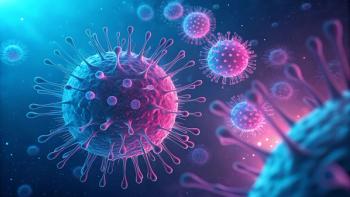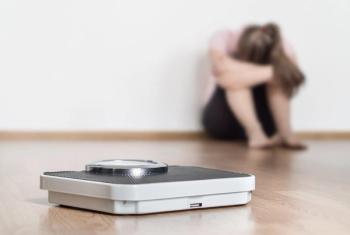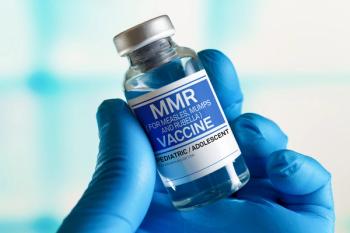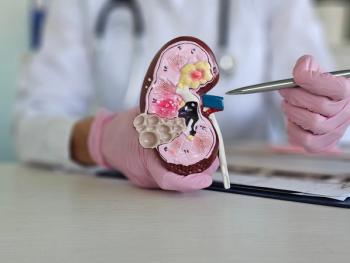
Addressing Burnout: Understanding the Root Causes in the Workplace
In this multi-part series on burnout and the problems currently facing pharmacy, trauma-informed pharmacist Helen Sairany, PharmD, MBA, discusses why burnout is skyrocketing.
The United States health care system is facing a moment of reckoning. Every year, the United States loses over 250,000 lives due to preventable death. These causes are not necessarily due to the provider’s negligence, but often have more to do with the compassion fatigue experienced by many health care providers after the COVID-19 pandemic.
Health care providers are finally voicing their concerns about the impacts of their workplace demands and the negative impact it is having on patient safety.
As a global pharmacist who has traveled all over the world and practiced on the front lines overseas, I find some of the statistics about preventable health care errors hard to fathom considering the United States has some of the most competent health care professionals in the world. Not only that, but we also have the most advanced systems and technologies for these providers to do their jobs at their maximum potential. Which makes me wonder about the real challenges in the health care system.
The problem is that health care institutions in the United States are run like businesses. Roughly 5% of health care consists of providers who go into the profession to provide the optimal care to the most vulnerable populations. The remaining 95% of the health care system is about number crunching. And the problem is not in us, because we are trained and know what we are supposed to do. We enter this profession to help, but don't know how to care for ourselves. We are also not cared for by the system we serve in. Our talent, our passion, and our credibility are limited to a metric. The residual impact of this system is that we are caught up in details and not what matters: the well-being of the provider who cares for the sick. The more we are caught in the details, the more we feel unfulfilled with what we have signed up for. The more we feel unfulfilled, the more we retract not only from each other but from the core of the health care system: the sick. The more we have retracted from each other, the lonelier and sicker we have become.
It is apparent that employees, especially front-line health care workers, are not simply tired. For so many, the rigorous training they signed up for has slowly but surely become an all-consuming inevitability, necessary to live but taking up most of life. Burnout is not just physical fatigue; it is a kind of disillusionment. It is a natural response to an awareness that an endless cycle of living to work is emotionally, physically, and mentally depleting.
The COVID-19 pandemic has amplified work-life challenges for many employees, as boundaries between work and home life become blurred. In these difficult times, the reality is that we need to make a living, but we also need to make sure that we are still “living” to avoid becoming burned out.
In the United States, the richest country in the world by all global standards, roughly 60% of adults have a chronic disorder and over 40% have 2 or more such conditions. Nearly 70% of Americans are on at least 1 prescription drug. In Canada, women are disproportionately at risk of diagnosis of autoimmune disorders.1 Among the younger population in North America, cancer seems to be on the horizon. Throughout the Western world, mental health diagnoses are escalating among the young as well as the elderly. Depression and anxiety are the 2 fastest-growing diagnoses among Canadians. In 2019 alone, more than 50 million Americans (over 20% of the US population) suffered an episode of mental disorder.1
Suicide rates among children are skyrocketing in the Unites States, as well. Millions of North American children and younger adults are being medicated with stimulants, antidepressants, and antipsychotics.2
Further, a recent study published by the Journal of the American Pharmacists Association showed that pharmacists are at an increased risk of death by suicide when compared to the public. According to that study, the suicide rate among pharmacists in the United States is 20 per 100,000, which is higher than the general population rate of 12 per 100,000.2
Medscape’s Annual Physician Burnout and Depression report indicated that 55% of physicians report that the bureaucratic tasks such as documentation and reporting were the no. 1 contributor to their burnout. This number increased to about 60% in 2022, a 5% increase in just 2 years. Roughly 68% of those same physicians reported that their burnout negatively impacted their family life, and 54% said it has severely impacted their wellbeing and quality of life. In 2021, 20% of physicians reported having clinical depression, but in 2022, that number jumped to 24%.3
According to a Harvard Medical School study, 96% of leaders report burnout.The Wall Street Journal notes that more than half of American employees are not content with their jobs. According to Gallup’s World Poll, 63% of the global workforce is “checked out” and “sleepwalking through their workday.” In corporate America, there is a large discrepancy between what employees want from work and their actual work experiences. This discrepancy has created a workforce where approximately 88% of workers lack passion for what they do every day.4
A study conducted by the American Psychological Association asked respondents to rank their stress level, and by far the millennials marched at the front of the stress parade. Nearly 40% of millennials said their stress had increased over the pandemic compared 33% among baby boomers and 29% among the older Americans.Over half of those millennials stated that the stress had kept them up at night, compared to 37% among baby boomers and 25% among older Americans. The societal expectation of success and our addictions to our devices has directly impacted millennials’ stress levels.5
In her book, Thrive: The Third Metric to Redefining Success and Creating a Life of Well-Being, Wisdom, and Wonder, Arianna Huffington states: “’Generation Y,’ otherwise known as the millennials, could be given a third, more alarming, name: ‘generation stress.’”6
One of the biggest causes of reported stress among younger Americans work. Seventy-six percent of millennials report work as a source of stressors compared to 62% among baby boomers and 39% among older Americans. Some of the reported challenges among millennials is the growing number of them who graduate college with massive amounts of student loans and find themselves desperately searching for a job, any job, that could help play the loans back.6
According to Huffington, “…millennials more than any other generation are casualties of the stress built into our economy—either overworking and hooked on technology, or unable to find work and struggling to pay the bills and survive.”6
One of the consequences of our current toxic definition of success is an epidemic of addiction and mental health disorders. More than 22 million Americans are using illegal drugs, more than 12 million are using prescription painkillers without a medical reason, and almost 9 million need prescription sleep aids. Additionally, the percentage of adults taking antidepressants has increased by 400% since 1988.7
These issues are not limited to the United States. In the United Kingdom, prescriptions for antidepressants have gone up by 495% since 1991. In the European continent more broadly, the use of antidepressants has gone up by 20% between 1995 and 2009.1
A Danish study found that women who reported work-related pressures as too high were at risk of 25% of heart disease. Those same individuals who are under immense amounts of stress at work are more likely to pick up some unhealthy bad habits and add to their risk of developing heart problems.8
In Germany, roughly 40% of employees report that their work has become more stressful in the last 2 years. In Germany alone, there have been reports of over 59 million workdays missed due to mental health, which is up 80% in 15 years. Work-related burnout is costing the country to 10 billion euros per year.1 In the United Kingdom, stress results in 105 million lost workdays each year.
The United States is not that different. Studies show that workers in the country spend 200% to 300% more on the indirect costs of health care, in the form of absenteeism, sick days, and lower productivity, than they do on actual health care payments.1
The impact of workplace demand on the mental health of employees—health care workers included—has been well documented. Every day, we hear reports about rising exhaustion, burnout, and staff turnover in our communities. There are major reports of pharmacy walkouts from large corporate chains in the United States as I write this piece. Like other health care providers, pharmacists and their team members are under an immense amount of stress, pressure, and demand to serve the needs of their patients.
A recent survey revealed that more than 50% of pharmacists report experiencing a high level of burnout in practice. This is one of the highest rates among health care professionals, even higher than those found among surgeons, oncologists, and emergency and trauma unit practitioners. Research shows that members of the health care team, pharmacists included, are more prone to making errors when under a lot of pressure. This is particularly concerning when considering that medical errors are the third leading cause of death in the United States behind cardiovascular disease and cancer.9
Work-related stress and burnout are rooted in lack of passion for the work we do. Lack of passion often happens when employees are assigned projects and job tasks not because they serve the greater cause, but because the tasks provide more revenue for the company. Over time, this lack of passion results in boredom and unhappy employees.
References
1. Maté, G. The Myth of Normal: Trauma, Illness, and Healing in a Toxic Culture. Avery, 2022.
2. Lee KC, Ye GY, Choflet A, et al. Longitudinal analysis of suicides among pharmacists during 2003-2018. Sci and Pract Res. 2022;62(4):P1165-1171. doi:10.1016/j.japh.2022.04.013
3. Lehmann C. More Physicians Are Experiencing Burnout and Depression. Medscape. February 1, 2023. Accessed November 14, 2023.
4. Kwoh L. When the CEO Burns Out. The Wall Street Journal. May 7, 2013. Accessed November 14, 2023.
5. Stress in America 2021: Pandemic impedes basic decision-making ability. News release. American Psychological Association. October 25, 2021. Accessed November 14, 2023.
6. Huffington, A. Thrive: The Third Metric to Redefining Success and Creating a Life of Well-being, Wisdom, and Wonder. Harmony, 2015.
7. Maté, G. In the Realm of Hungry Ghosts: Close Encounters With Addiction. North Atlantic Books, 2010.
8. Waters TR, Dick RB. Evidence of health risks associated with prolonged standing at work and intervention effectiveness. Rehabil Nurs. 2015;40(3):148-165. doi:10.1002/rnj.166
9. Dee J, Dhuhaibawi N, Hayden JC. A systematic review and pooled prevalence of burnout in pharmacists. Int J Clin Pharm. 2022:1-10. doi:10.1007/s11096-022-01520-6
Newsletter
Stay informed on drug updates, treatment guidelines, and pharmacy practice trends—subscribe to Pharmacy Times for weekly clinical insights.














































































































































































































